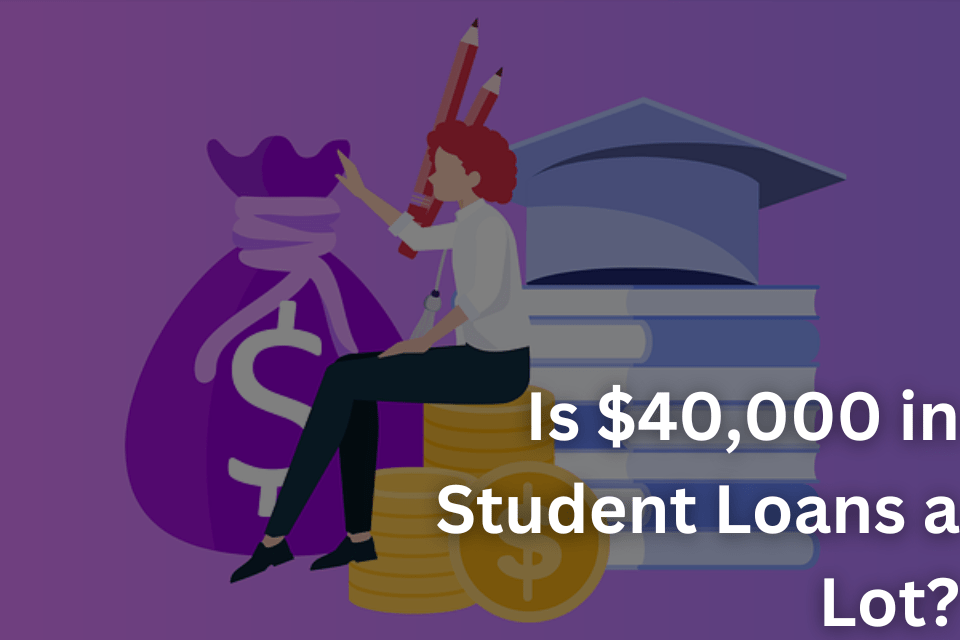Paying for college can be a significant financial burden for many students and their families. One way to cover the costs is through student loans, which can help bridge the gap between the cost of attendance and any grants, scholarships, or other financial aid you may receive. However, taking on student loans also means you’ll have to pay back that money, with interest, after you graduate. This can lead to a lot of questions, such as “Is $40,000 in student loans a lot?” In this article we will explore the average student loan debt and how to manage $40,000 in student loans.
How Does $40,000 in Student Loans Compare to The National Average?
The average student loan debt for graduates of the class of 2020 was $30,500, according to the Institute for College Access and Success. However, this figure varies widely depending on factors such as the type of degree, the school attended, and the student’s family income. For example, graduates of private, non-profit four-year colleges had an average debt of $32,900, while graduates of public four-year colleges had an average debt of $28,950.
While $40,000 in student loans may seem like a lot, it is not uncommon for students to take on more than the national average. According to the latest data from the Federal Reserve, 7% of student loan borrowers owe more than $50,000 in student loans. So, $40,000 in student loans is not an uncommon amount for students to owe.
How to Manage $40,000 in Student Loans
Managing $40,000 in student loans can seem overwhelming, but there are several steps you can take to help make the process more manageable.
- Understand your loan terms: Make sure you understand the terms of your loans, including the interest rate, repayment period, and any fees associated with the loan. This will help you budget for your monthly payments and know what to expect.
- Explore repayment options: The standard repayment plan for federal student loans is 10 years, but there are other options available, such as income-driven repayment plans, which can lower your monthly payments.
- Consider consolidation or refinancing: Consolidating or refinancing your student loans can lower your interest rate and simplify the repayment process.
- Make extra payments: Make extra payments when you can to help pay off your loans faster and save on interest.
Impacts of Defaulting on $40,000 in Student Loans
Defaulting on your student loans can have serious consequences, including wage garnishment, tax refund interception, and damage to your credit score. It is best to avoid defaulting on your loans if possible. If you are having trouble making your payments, contact your loan servicer as soon as possible to discuss your options.
The Benefits of Paying Off $40,000 in Student Loans
Paying off your student loans has several benefits, including:
- Improving your credit score: Making your student loan payments on time can help improve your credit score, making it easier to get approved for credit cards, mortgages, and car loans in the future.
- Financial freedom: Paying off your student loans can free up money for other expenses and help you reach your financial goals faster.
- Peace of mind: Knowing that your student loans are paid off can bring a sense of relief and peace of mind.
The Options for Student Loan Forgiveness
There are several options for student loan forgiveness, including:
- Public Service Loan Forgiveness (PSLF): If you work for a government or non-profit organization, you may be eligible for loan forgiveness after making 120 qualifying payments.
- Income-Driven Repayment (IDR) Plans: These plans can forgive the remaining balance of your loan after 20-25 years of payments, depending on the plan.
- Teacher Loan Forgiveness: If you are a teacher working in a low-income school or educational service agency, you may be eligible for loan forgiveness of up to $17,500.
- Military Service Loan Forgiveness: Service members may be eligible for loan forgiveness through programs such as the Army, Navy, and Air Force loan repayment programs.
It’s worth noting that the qualifications for each of these options vary and not everyone will qualify, but it’s worth looking into if you’re struggling to pay off your student loans.
Conclusion
$40,000 in student loans is not an uncommon amount for students to owe, and there are several steps you can take to manage your loans. However, defaulting on your student loans can have serious consequences. It’s important to explore your repayment options, consider consolidation or refinancing, and make extra payments when you can. Additionally, there may be options for student loan forgiveness that you can take advantage of. It’s important to stay informed and take steps to manage your student loan debt so that it doesn’t become a burden on your financial future.

